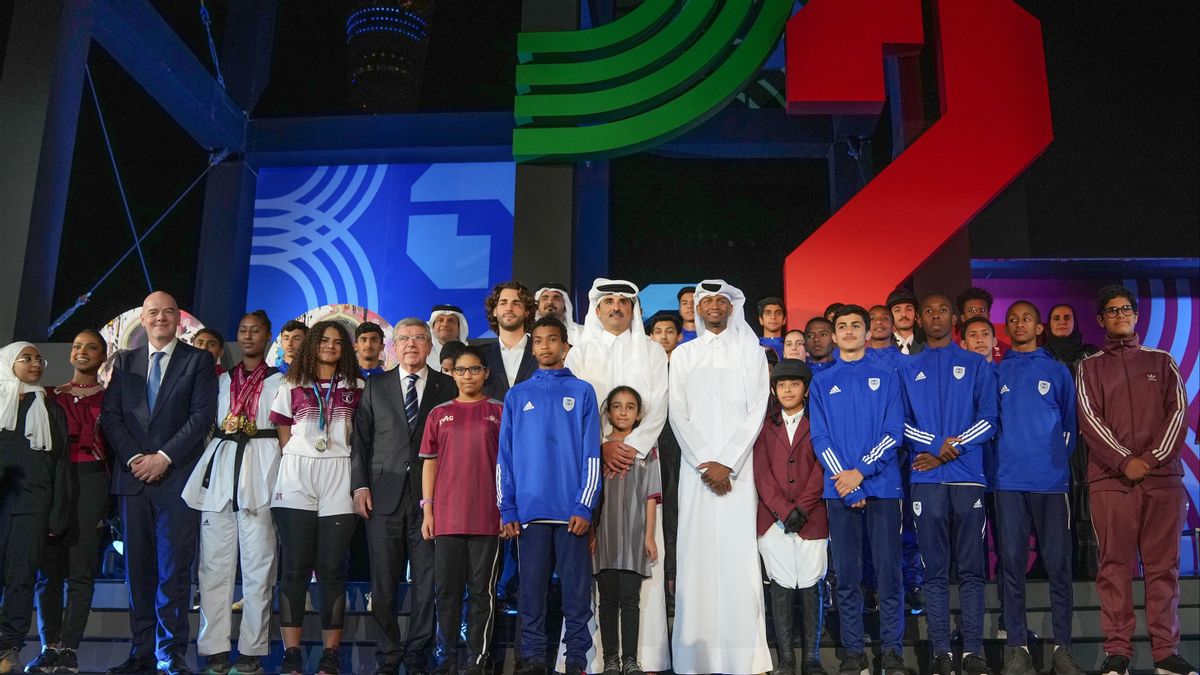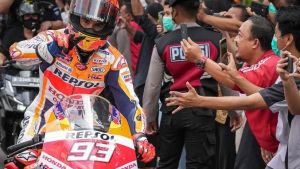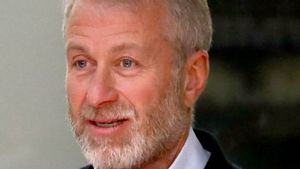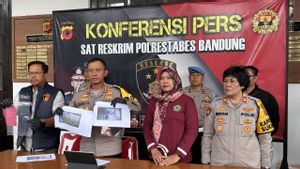JAKARTA - Qatar on Wednesday opened one of the world's largest sports museums with artifacts from some of the most famous Olympic champions and also accommodates the excellence of the country's local athletes to stimulate a new generation of interest in the world of sport.
The 19.000-square-meter Qatar 3-2-1 Olympic and Sports Museum is located next to one of the stadiums that will be used for this year's World Cup. The construction of the museum as well as the collection of various historical sports artifacts took more than 15 years.
After exploring private collections and negotiating with the International Olympic Committee and other federations, they eventually collected 17.000 objects including the boxing gloves worn by the late boxing legend Muhammad Ali when he won the 1960 Rome Olympic gold medal, a Ferrari driven by Formula One champion Michael Schumacher and the costume worn by the legend. Brazilian football Pele.
HE Sheikha Al Mayassa bint Hamad bin Khalifa al-Thani delivers a speech during the opening ceremony of Qatar Olympic and Sports Museum #321QOSM pic.twitter.com/j5BUfpjTWq
— Gulf-Times (@GulfTimes_QATAR) March 30, 2022
There is also the cricket bat that became the idol of India's Sachin Tendukar and the torch of every modern Olympics.
The museum is part of the Qatari government's billion-dollar project to build the Gulf state into a cultural haven in addition to huge spending on sporting events.
Museum director Abdulla Al Mulla denied the existence of the museum was only meant to highlight Qatar's wealth.
"We're not showing off," he told AFP. "We have confidence, we have the trust of the international federation."
Al Mulla also said that Qatar's ruling family wanted the museum to also showcase its domestic sporting heritage.
Giving prominence to local #athletes and to boost efforts to attract new generations into #sports, #Qatar has opened one of the world's biggest sports #museums with artefacts from some of the most famous #Olympic heroes https://t.co/1fKnrYIe3J
— Arab News (@arabnews) March 30, 2022
A prince on horseback at the Olympics is seen with Sheikh Hassan bin Jabor Al-Thani, who set a catamaran speed record of 244 miles (395 kilometers) per hour in 2014.
Al Thani, a member of Qatar's ruling family who competed from 2003 to 2015, also said the museum was an "icon" record of all Qatari athletes and their rankings.
"If I knew there was a wall with a local athlete on it, I would definitely want to be better than that athlete."
SEE ALSO:
"So I'm going to do 110 percent to get it up on that wall too. Now I'm a target and people are going to work hard to get past me and put their picture on it."
Museum gallery curator Victoria Cosgrave said the museum was different because it did not shy away from controversies such as the use of drugs by athletes, corruption, and the murder of athletes at the 1972 Munich Olympics.
"I think one of the biggest challenges we face -- and it's not just in Qatar but everywhere -- is balancing the controversial aspects of sport, wanting to be honest about the sport and the people of the sport but also wanting to be respectful and respectful. be an inspiration," he said.
The English, Chinese, Japanese, Arabic, and French versions are automatically generated by the AI. So there may still be inaccuracies in translating, please always see Indonesian as our main language. (system supported by DigitalSiber.id)
















